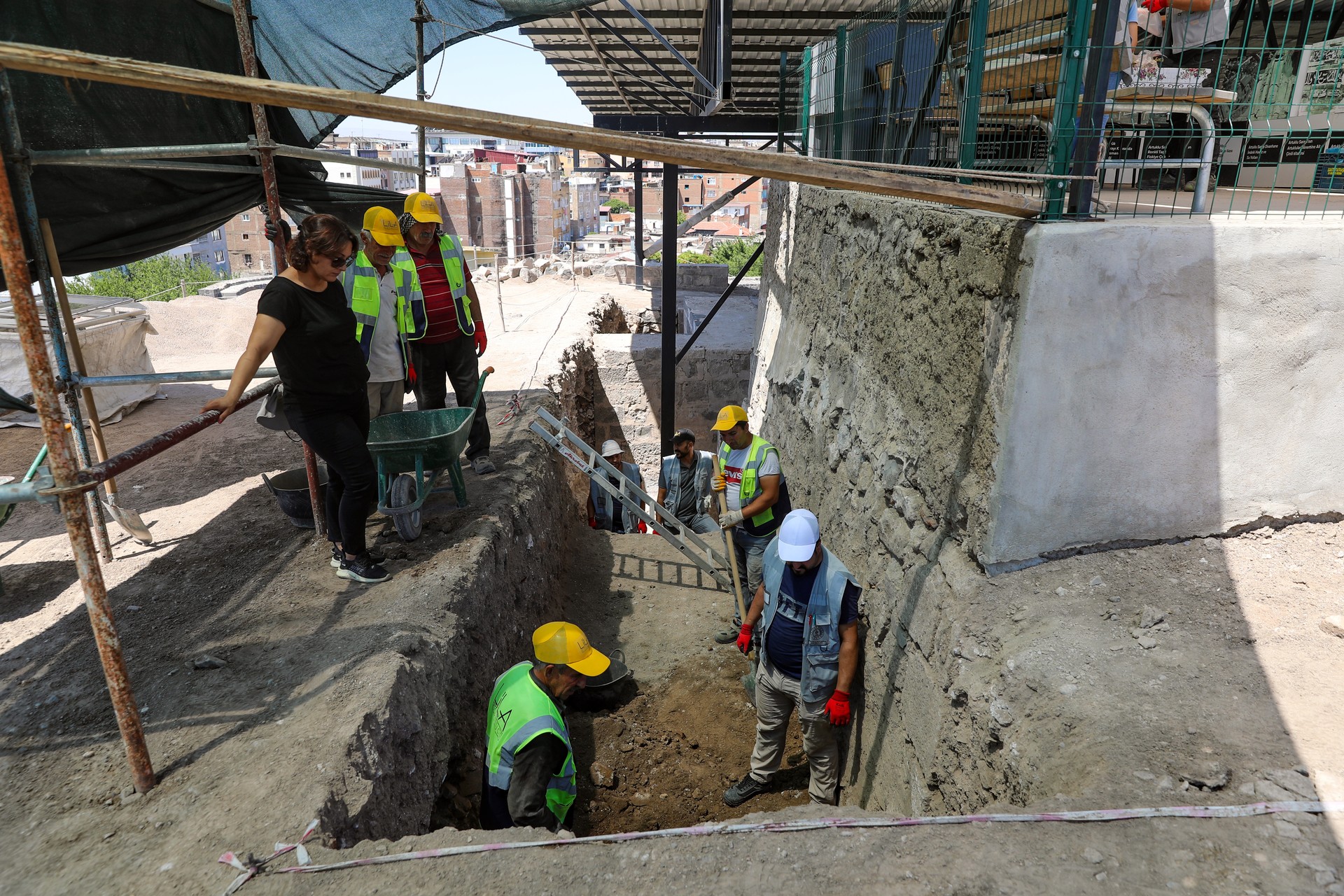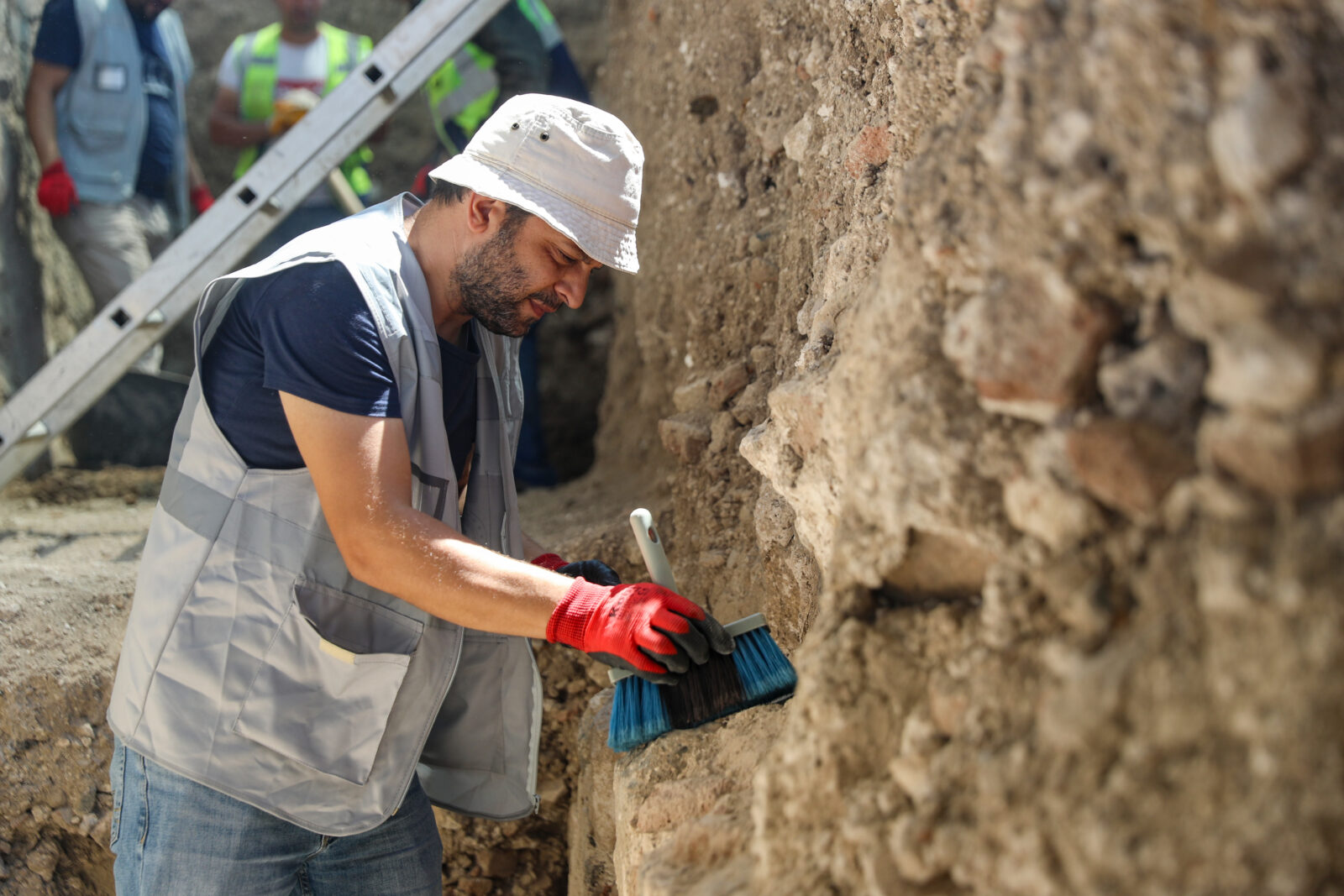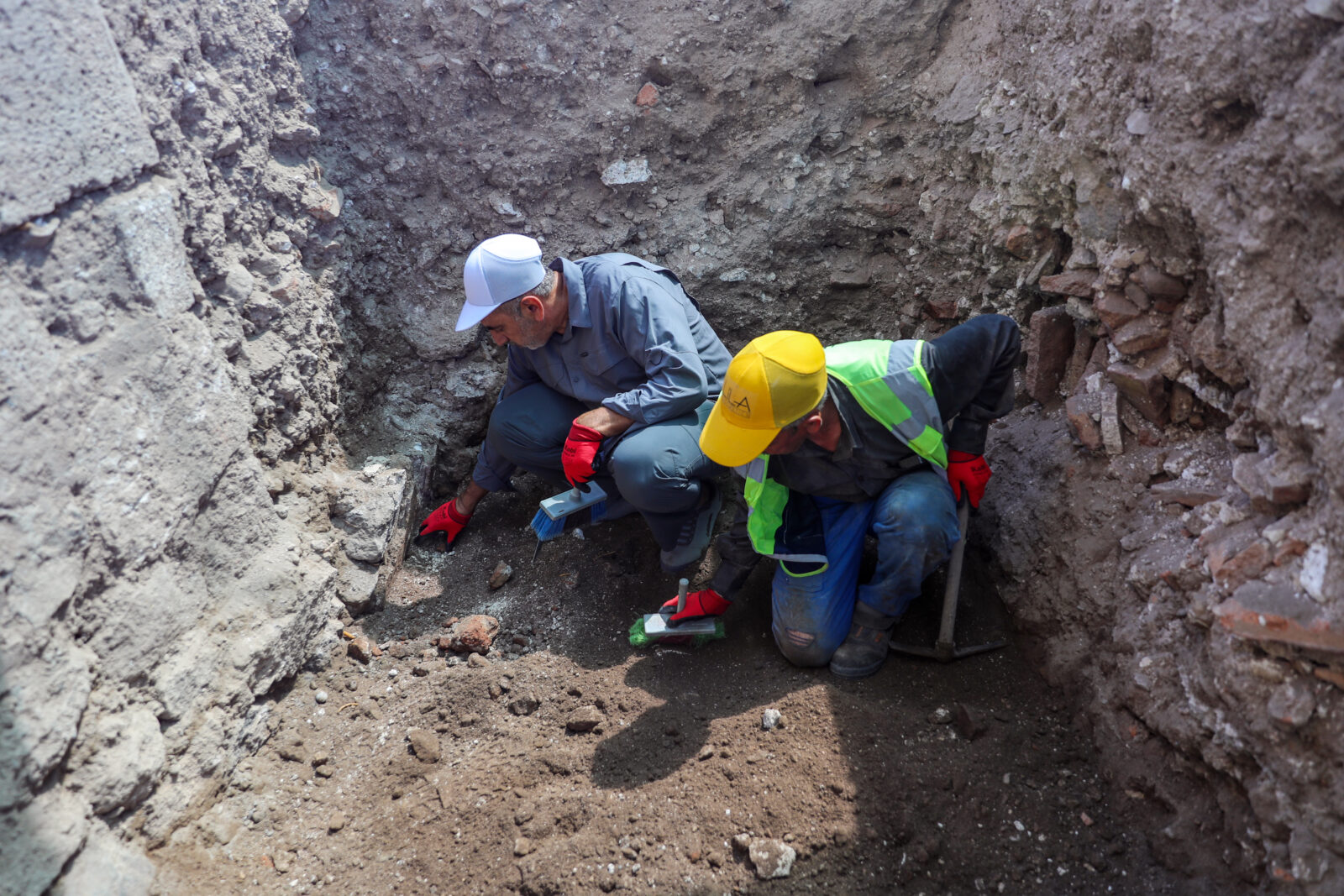
Recent archaeological research at Amida Hoyuk, a 9,000-year-old site in Diyarbakir known as the "heart of the city," has confirmed that the mound was burned three times throughout its history.
Analysis by the Scientific and Technological Research Council of Türkiye (TUBITAK) has definitively shown that the site was subjected to three distinct fires between 7,000 and 5,000 years B.C.
Under the leadership of Prof. Irfan Yildiz, excavation work at Amida Hoyuk began in 2018. This year’s focus is on the Artuklu Palace's reception hall.

The ongoing excavations have already uncovered remnants such as approximately 1,800-year-old water channels, 1,700-year-old burial chambers, World War I-era grenades, and 800-year-old marble fragments.
Professor Yildiz emphasized the significance of the Amida Hoyuk excavations for both the region’s history and tourism. “Known in the past as Amedi and Amidi, and today as Amida, this mound serves as both the brain and the heart of the region. These excavations are crucial for bringing greater awareness to Diyarbakir's history and tourism,” he stated.
TUBITAK's analysis identified three separate fire layers dating back to 6,764 B.C., 5,721 B.C., and the fifth millennium B.C.

Yildiz noted that these findings confirm the site’s repeated destruction by fire throughout various periods.
The ongoing excavations aim to uncover remnants from the Roman, Assyrian, and Hurrian periods, with hopes of discovering artifacts related to the legendary engineer El Cezeri.
The completion of these excavations is expected to significantly boost tourism in the ancient city of Amida.